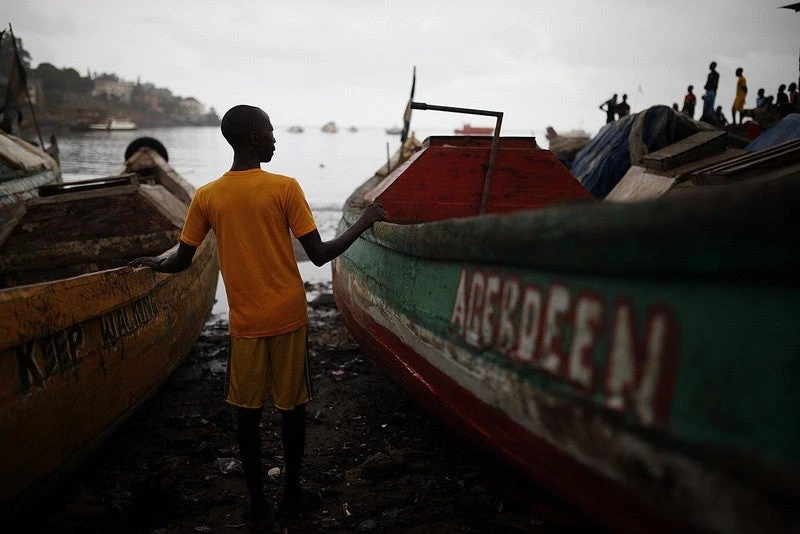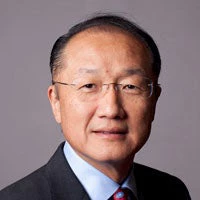
Each year on October. 17, we mark End Poverty Day at the World Bank Group to celebrate the progress we’ve made toward our twin goals: to end extreme poverty by 2030; and to boost shared prosperity among the poorest 40 percent around the world. But more importantly, we use this day to take stock of how much further we have to go.
Today, we released the latest Poverty and Shared Prosperity Report, which shows that we have never been closer to realizing those goals. The percentage of the global population living in extreme poverty has dropped from 36 percent in 1990 to 10 percent in 2015, the lowest it has ever been in recorded history. During that time, more than 1 billion people lifted themselves out of poverty. About half of the world’s countries have reduced extreme poverty below 3 percent – the target we set for the world to reach by 2030.
This is one of the great achievements of our time, but 736 million people still live in extreme poverty – that's living on less than $1.90 a day. The pace of poverty reduction is also slowing. Globally, poverty shrank by just over 1 percentage point between 2013 and 2015, half as slowly as between 2011 and 2013. To reach our goal of bringing extreme poverty below 3 percent by 2030, the world’s poorest countries will have to grow at rates that far surpass their historical experience.
Poverty is also becoming more concentrated in Sub-Saharan Africa. In 2002, the continent was home to just a quarter of the world’s poor, but in 2015 more extremely poor people lived in the region – 413 million – than in the rest of the world combined. Nigeria will soon pass India as the country with the most people living in extreme poverty, if it hasn’t already. Three-fourths of Sub-Saharan African countries had poverty rates above 18 percent in 2015, and of the world’s 28 poorest countries, 27 were in Sub-Saharan Africa.
This means there is no room for complacency. We must intensify our efforts to boost economic growth in lagging countries and ensure that the poorest 40 percent of the population benefits more from economic progress.
At the same time, we’re taking a broader view of poverty. Most of the world’s poor now live in middle-income countries, and our research indicates that those countries tend to have a more demanding view of poverty.
For this year’s Poverty and Shared Prosperity Report, we looked at two other poverty thresholds: a quarter of the world’s population lives on less than $3.20 a day, which is the typical poverty level in lower-middle-income countries. And nearly half of the people on Earth live on less than $5.50 a day – the typical poverty level in upper-middle-income countries.
For example, Kalu Ram and Kherun Nisha, a couple in Jaipur, India, where the median income is less than $3.20 a day, might be able to afford sandals and a simple cookstove, but the purchase of a bike for their child is still an aspiration. Or the Poma family of seven, in La Paz, Bolivia, who live on less than $5.50 a day in a two-bedroom house and dream of buying a refrigerator.
Our twin goals will continue to guide our work, but with the majority of the world’s poor now living in middle-income countries, these new thresholds will help broaden our conception of poverty. They can be both aspirational targets for low-income countries and more relevant poverty thresholds for middle-income countries. Above all, they can help us accelerate progress toward ridding the world of poverty in all of its dimensions.
Measuring poverty also means measuring people’s well-being. Our new multidimensional poverty measure takes into account deprivations in education, electricity, water, and sanitation. Often household resources are not distributed equally, leading to greater inequality – especially for women and children – so we need to look at how resources are distributed within households.
We have made tremendous progress in this effort, but the last leg of the journey will be the toughest. We’re accelerating our efforts to drive inclusive, sustainable economic growth; build resilience to shocks and threats; and help countries invest more – and more effectively – in their people.
Last week at the IMF-World Bank Group Annual Meetings in Indonesia, we launched the Human Capital Index, which will help make the case for investments that build human capital. We’re working closely with 28 countries that are early adopters of our Human Capital Project to make the right investments to prepare their people for the future. Our research shows that better outcomes in health and education are far more powerfully correlated with economic growth than we ever thought and can help drive poverty reduction all over the world.
Ending poverty is our mission at the World Bank Group. When staff and visitors enter our headquarters, they pass a large sign engraved on the wall: “Our Dream is a World Free of Poverty.” We have never been closer to realizing that dream, but we must step up our efforts to end poverty in all of its forms and finally make that dream a reality.
This blog was originally published on LinkedIn.


Join the Conversation